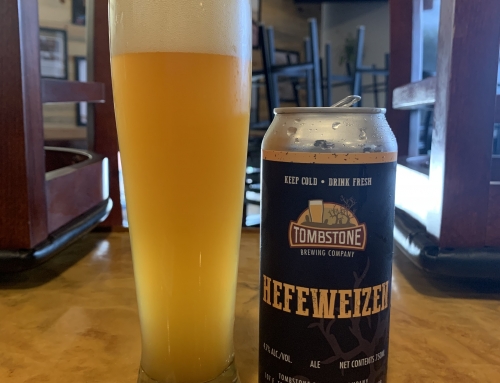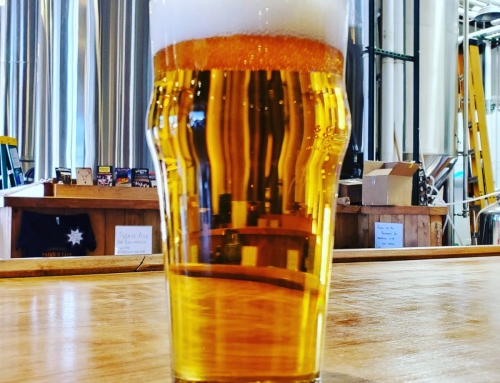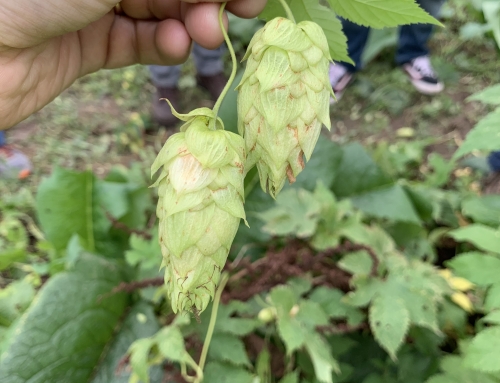A few months ago, I talked to Matt Brown, the founder of Tombstone Brewing Company, for the first time. What started off as a job interview quickly fell apart into two dudes talking for a couple hours about beer. It turned out that we had a lot of the same interests in beers and brewing philosophies. Most importantly, we had the same vision for what would make a great craft brewery. It was very obvious after our first talk that this was a great opportunity to make something special in Tombstone, Arizona. After meeting Matt and his family, it was clear that these were the types of people that I would like to partner with.
One of the most exciting prospects to me was that the idea is to devote all of our attention on making great beer and not necessarily on expanding production. I’ve always believed in staying small and keeping beer close to home. At Tombstone, we have that option thanks to self distribution being legal in Arizona. Getting away from the three-tier system is something I have wanted for a long time. Although with self distribution we have a lot more responsibilities as a brewery, it gives us the option of brewing a much wider variety.
First, we had bought yeast with an anticipated first brewday almost a week and a half ago. When buying yeast for use in commercial breweries, it is challenging to get yeast to live for longer than a week in storage. When it became apparent that we would not be able to brew when we thought we would, I realized that I was going to need to feed the yeast fresh nutrients to keep it healthy. Normally, that would not be to big of a deal, except for our grain shipment being delayed by a week, meaning I had nothing to use to feed the yeast. It turns out that since we are in such a small town, the carrier for the shipment only delivers in this city once a week.
We frantically rushed to a homebrew store late last Friday and bought all the dry malt extract they had as well as a pump and some other common homebrew supplies in an effort to keep the yeast healthy. It was a pretty scary time thinking that our specially ordered yeast (which takes 2 weeks for the lab to propagate for us) would be dead by the time we were ready to brew and that there was not much we could do about it. Fortunately, the emergency homebrew shop trip worked out and we managed to salvage the yeast for our first brew day yesterday.
It was very exciting to get to brew for the first time on a new system. I expected a lot of unforeseen challenges to pop up throughout the day since I’m learning a completely new system here, but somewhat miraculously, everything worked exactly as my 2.5 year old brewing spreadsheet from school said it should. This was my first time brewing on a system with this much control over each part of the process.
Starting from the beginning of the process, we have a Reverse Osmosis water generator which makes the water as close to pure as possible without distilling it. The system is actually running to take the total dissolved solids to about 1 ppm. Starting with a blank slate like that, I now have the option of recreating any water profile I want for each style of beer. With the use of a flow meter going into the mash tun, I can control the exact water to malt ratio which is also a luxury that I have not had before.
Yesterday, I brewed three 15 BBL batches of beer. It was a little ambitious to brew 3 times in a day since it was my first time using the system, but it worked out very well. The day was about 4 hours longer than what it should normally be, but a slower day was to be expected as I was being extra cautious with every valve I opened and every pump I turned on.
The 3 beers brewed were a Special Bitter, a Blonde Ale, and a Northeast Style IPA. The IPA is the beer that I’m most excited about, but each one of these beers has something different that makes me anxious to try them.
The first batch of the day was the Bitter. I very rarely brew beers that are so low in gravity. Although this bitter will finish right around 4% ABV, the use of high quality, floor malted Crisp Maris Otter, a thick mash, high mash temperature, and a water profile similar to the historical water profile at Burton on Trent, the bitter will still be very full bodied and, despite the name, it will not be very bitter. Right around 30 IBU’s, bittered and flavored with East Kent Goldings. In my opinion, the key to making a great low gravity English beer like this is to use a very flavorful base malt and an estery yeast strain. The strain we chose is known for giving peachy esters and creating large amounts of glycerol, enhancing the creamy mouthfeel of the beer.
The second batch was the NEIPA. This is a style that I have been researching for months now. It is a style that I first wanted to write off, thinking that the cloudy appearance was just a gimmick. However, after trying several different examples, I dove deep into research about the interactions between hops and some yeast strains which lead to an obsession with creating this style. Utilizing a very estery yeast with fruity hops, this beer relies on biotransformation of hop oils to create an intensely tropical and citrusy aroma. The mouthfeel of this style should also be very creamy with an intense estery character from the yeast. To enhance the creamy mouthfeel, we used the same glycerol producing strain that we used in the bitter, flaked oats, flaked wheat, and a water profile with a slightly elevated chloride content. Although the terminal gravity will be quite low, the perception will be of a thicker bodied beer due to the creaminess of the mouthfeel.
The last beer yesterday was a Blonde Ale. Typically, brewers don’t get too excited about brewing a style that is perceived as being somewhat boring. However, I was very excited about this beer because it will give me the best idea of what our system is capable of. I created a water profile similar to the historic Pilsen water… VERY soft water and very thin mash should result in a light, crisp mouthfeel and will lend to a very high drinkability. That said, I did use a characterful Kolsch yeast strain to provide a lightly fruity flavor profile. At 13 IBU’s, 5% ABV, and 3 SRM, this will probably be the most exposed beer I’ve ever brewed. With no room for mistakes, it was a huge relief that everything went exactly as planned.
At the end of the brewday, it occurred to me how remarkable it was that every beer ended up right on with our target gravities, evaporation rates, temperatures, and pH levels. I never would have guessed that we could make consistent results across three batches our first time on a new system. The beers are all happily fermenting now today and the first beers should be ready towards the end of the month. Stay tuned for an update on the next beer brewed… We’re working on a few specialty beers in the next couple weeks!




I attended the soft opening Friday & Saturday, Oct. 21st and 22nd. The IPA was wonderful! The staff is happy and helpful, a nice place to hang out, good atmosphere. I look forward to seeing the finished project and will be back!!
I’m reading this from Ground Control in Litchfield Park with you IPA in hand… very well done indeed – I would never have thought that this was a first batch. I look forward to future batches!
Wow, so crazy to read this post a couple years later. Itʻs great to see how things have really taken off!